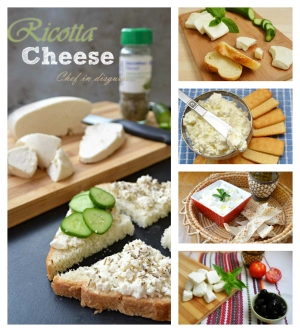Audax of Audax Artifax was our November 2012 Daring Cooks’ host. Audax has brought us into the world of brining and roasting, where we brined meat and vegetables and roasted them afterwards for a delicious meal!
I have only brined pumpkin seeds before, I have never tried this technique with meat or vegetables and I was looking forward to experimenting with it. I brined and roasted chicken cutlets, vegetables and almonds and was very impressed with the results in all three trials. The chicken was juicy and moist. Even the chicken breast was juicy. The vegetables were crisp on the edges, perfectly roasted in the centers. As for the almonds, I have tried to roast them before and simply sprinkle with salt and they were never like the almonds you buy. It turns out the secret was brining! they were just right! The only problem is they were all gone before I could take a picture. I look forward to trying this with a whole chicken and to experimenting with different fluids in the brining solution.
Brining is the process of soaking fowl (chicken, turkey, goose, duck and guinea fowl), lean red- and lean white-meats, fish, seafood or nuts and seeds in a brine (salt and water) solution. Brining increases the moistness and improves the taste of the brined meat, making it tasty , juicy and giving the skin a beautiful color. Brining has one large positive effect on fish fillets, a quick brine (only 10 mins) greatly improves the appearance of cooked fillets, because the brine reduces the unsightly white layer of albumin that coagulates on the surface during cooking.
How does brining work?
Brining works in accordance with two principles, called diffusion and osmosis, these two principles like to keep things in equilibrium (or in stable balance). When brining a fowl for example, there is a greater concentration of salt and sugar outside of the fowl (in the brine) than inside the fowl (in the cells that make up its flesh). The law of diffusion states that the salt and sugar will naturally flow from the area of greater concentration (the brine) to lesser concentration (the cells). There is also a greater concentration of water, so to speak, outside of the fowl than inside. Here, too, the water will naturally flow from the area of greater concentration (the brine) to lesser concentration (the cells). When water moves in this fashion, the process is called osmosis. Once inside the cells, the salt and, to a lesser extent, the sugar causes the cell proteins to unravel, or denature. As the individual proteins unravel, they become more likely to interact with one another. This interaction results in the formation of a sticky matrix that captures and holds moisture. Once exposed to heat, the matrix gels and forms a barrier that keeps much of the water from leaking out as the meat cooks. Thus you have a roast that is both better seasoned and much more moist than when you started.
What to brine?
The items that usually benefit from brining are lean cuts of meat with mild flavour tend to benefit most from flavour brining also most nuts and seeds can be brined with good effect. These include:
Chicken: whole, butterflied, or pieces
Cornish Hens: whole or butterflied
Turkey: whole, butterflied, or pieces
Seafood: salmon, trout, shrimp
Beef: use lean pieces of beef
Nuts and Seeds: Most nuts and seeds are suitable i.e. pumpkin, peanuts, sesame, almonds etc.
Fatty meats such as duck, beef, and lamb do not benefit as much from brining (but still can be brined)—they’re naturally moist and flavourful. They also tend to be cooked to lower internal temperatures and thus don’t lose as much of their natural moisture.
All-Purpose Brine:
Makes 4 cups of brine enough for about one pound (½ kg) of meat
This is the brine to use for most cuts of meat and poultry that will be roasted.
Ingredients
4 cups (1 litre) of cold water
¼ cup (70 gm) table salt or ½ cup (70 gm) Diamond Crystal Kosher Salt optional
2 tablespoons (30 ml) (30 gm/1 oz) sugar (see note 2)
optional 3-4 peppercorns, a few springs of herbs, a garlic clove or two, a knob of ginger etc. (see note 3)
Instructions
1. Heat 1 cup of water to boiling point add the salt and stir until all the salt has totally dissolved.
2. Place in a non-reactive container (glass, plastic, stainless steel, zip-lock bags etc). Add the remaining water and stir. Make sure that all the salt has dissolved. Wait until the brine has reached room temperature.
3. Add your cut of meat make sure that the meat is completely submerged (that is totally covered in the salty water) if need be you can weigh down the cut of meat with a clean plate (etc). If using plastic bags make sure that the meat is totally covered in brine and make sure that is bag is locked securely.
4. Cover the container with plastic wrap to prevent odours contaminating the flavour brine or the brine leaking.
5. Place the container into the refrigerator for the soaking time suggested by the guidelines above.
6. If desired you can air-dry your poultry (usually over night) in the refrigerator if you wish to have crispy skin on your bird. It is best to pat dry your brined item (inside and out) with paper towels before cooking.
7. Cook the brined item as directed by the roasting guidelines above.
Notes
1. You can replace all or some of the water with a combination of other fluids. For example try experimenting with cider, tea, coffee, fruit juice, most sauces (tomato, soya, BBQ, chilli etc), chicken stock, beef stock or fish stock. Be careful with acidic liquids like wine, cider, fruit juices which can turn your meat to mush if brined too long.
2. A little sugar can help overcome the saltiness of the brine and helps to give a nice sheen to your piece of meat when roasted. You can use up to ¼ cup of sugar (use the lesser amount (2 tablespoons) for high temperature roasting since the brine can burn at high heats if you use too much sugar). You can use brown sugar or honey or other sweeteners if you wish. 3. Any combination of spices and herbs can be used to flavour the brine. Garlic powder, onion powder and ginger powder are excellent to use for brining.
Roasted brined chicken
1 chicken cut into 4 pieces
Enough brine solution to cover the chicken pieces completely
4-5 pepper cones
1 rosemary springs
1 crushed garlic cloves
Brine the chicken in the flavoured brine in the refrigerator for 1-2 hours. (Make sure that every part of the chicken is covered in the brine you can weigh the pieces down with a clean plate so it is completely submerged.
Discard the brine and dry the chicken pieces with paper towels.
Preheat oven to moderately hot 220°C/425°F/gas 7.
Roast for 15 minutes.
Reduce oven to moderate 180°C/350°F/gas 4 and roast for a further 12-15 minutes per 450 grams/pound, You can check for done-ness the internal temperature should be 165°F/84°C, or the juices should run clear when you pierce the bird between the leg and thigh.
If you are not happy with the skin color place the chicken under the broiler for a minute or two till the color is golden brown
Rest for approximately 15 minutes covered loosely in foil.
Brined Roast Vegetables
Adapted from Jamie oliver recipe
Ingredients:
Potatoes cut into wedges
Carrots cut into thick slices
Rosemary
2 Crushed garlic cloves
1 teaspoon paprika
Olive oil
Crushed black pepper
Directions:
Put the potatoes and carrots into a large pot of boiling brine solution on a high heat and bring back to the boil
Allow to boil for 5 minutes
Drain in a colander and allow to steam dry
Put the carrots and potatoes in a big roasting tray
Drizzle with olive oil
Add the garlic, rosemary leaves, paprika, black pepper
Toss the potatoes and carrots to coat
Spread them out evenly into one layer – this is important, as you want them to roast, not steam as they will if you have them all on top of each other
Roast in a very hot oven 240 C (475 f)
Notes:
I found that the potatoes and carrots came out a little salty. Next time I will either make the wedges thicker or reduce the amount of salt in the brine to 2 tablespoons salt per 4 cups of water
For best results use the largest shallow heavy-weight roasting pan you have and make sure that the vegetable are well spaced out in the pan and only form one layer, use two trays if necessary.
A very hot oven 475°F/240°C/gas mark 9 is the key to roasting vegetables.
Only toss the vegetables once or twice during cooking.
You can add a small amount of apricot fruit spread or honey in the last 10 minutes to enhance the caramelising process.
Basil, rosemary and thyme are best when used fresh.
Curry, paprika and turmeric are also great. Grated ginger or crushed garlic can also be added.























